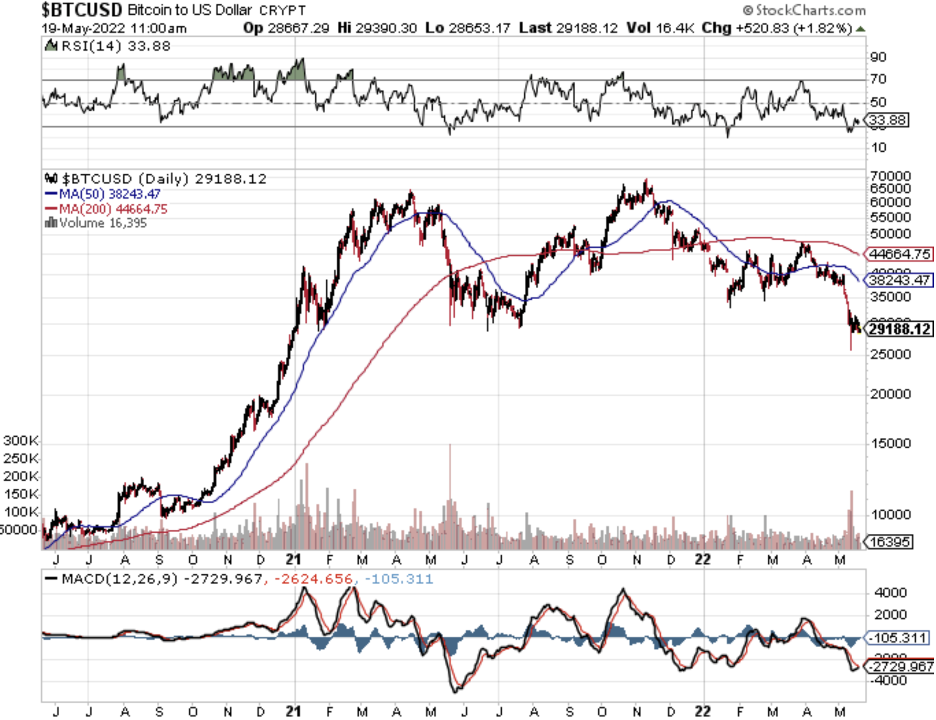Where there’s smoke, there is fire.
That is how you need to approach the crypto industry right now as systemic risks creep in.
Withdraw your money from Coinbase (COIN) immediately and switch to trading crypto-based ETFs on the New York Stock Exchange.
Why?
In the event the crypto exchange goes bankrupt, Coinbase says, its users might lose all the cryptocurrency stored in their accounts too.
Coinbase told us “crypto assets we hold in custody on behalf of our customers could be subject to bankruptcy proceedings.”
Coinbase users would become “general unsecured creditors,” meaning they have no right to claim any specific property from the exchange in proceedings. Their funds would become inaccessible.
CEO of Coinbase Brian Armstrong is trying to swindle investors out of their money by putting in place the infrastructure to not return funds if bankruptcy happens.
To even talk about this in public is stirring unease and sowing mistrust within the management team there.
If Armstrong wanted a crypto winter, he is doing everything in his power to trigger it by his behavior by killing crypto adoption rates.
Bank accounts in the U.S. are protected by deposit insurance offered by the Federal Deposit Insurance Corporation. In the event a bank fails, the FDIC steps in to protect deposits up to $250,000, preventing depositors from going broke along with the bank.
Crypto exchanges are unsecure and not insured so that’s where the risk is.
As customers had to pay Coinbase a fee for every crypto transaction, the fintech generated rip-roaring growth over the last two years - revenue surged from less than $200 million in the first quarter of 2020 to $2.5 billion in the fourth quarter of 2021. Similarly, net profit increased more than 26-fold from $32 million to $840 million.
Bitcoin dropping to under $30,000 from the high of $65,000 has been a catastrophic disaster for Coinbase.
They essentially rely on higher volume to build growth and when their customers are busy getting impoverished, it doesn’t set the stage for Coinbase to build higher trading volume.
Setting up management to secure a get out of jail-free card for utter failure is another issue I have as an investor.
At the bare minimum, the optics are terrible, and questions arise about fiduciary duty which could result in a tsunami of lawsuits against Armstrong and Coinbase.
Sadly, the price of Bitcoin, which was promoted as an inflation hedge has in fact proved to be the polar opposite.
In times of hyperinflation, people want physical stuff like food, medicine, gas, and housing. Not digital currency.
I do believe cryptocurrency is a great investment when people aren’t paying $6 per gallon of gasoline.
The sudden spike in energy costs was triggered by terrible foreign policy mistakes by the current administration.
Now everyone in the crypto industry is running around with their head cut off scared of potential liability to these digital coins and digital exchanges for which there is no historical precedent.
How does the court behave if a crypto exchange blows up?
Nobody has a clue.
This is where we are at this point in the crypto narrative and the bears are piling in like no other.
Target (TGT) reported dire earnings reporting severe margin contraction because of higher costs.
The net result is yet another ax to risk assets and crypto is one of the most speculative out there.
The rest of the year will be a tough slog for crypto and it won’t work itself out until inflation is back under control.
But as many people understand, the US Central Bank is not interested in taming inflation and is professional at downplaying any risk.
The result is that hyperinflation explodes, risk assets sell-off, and investors go to cash.
Brian Armstrong gleefully telling investors he will fleece us is just another strong signal and supportive data point of my overarching thesis.
Price of Bitcoin is on its way to $20,000 soon.



